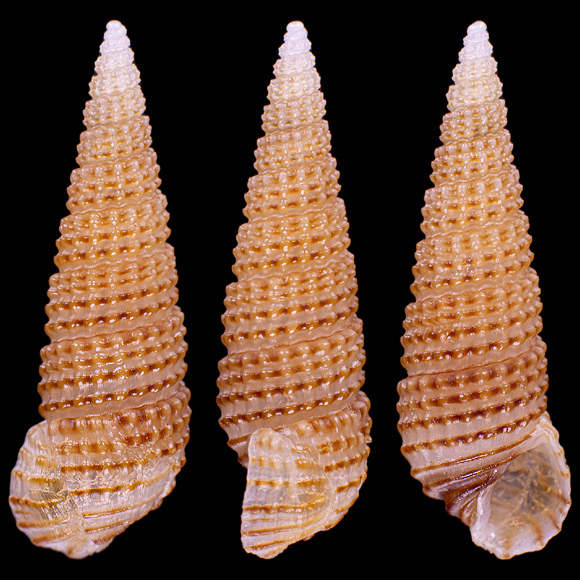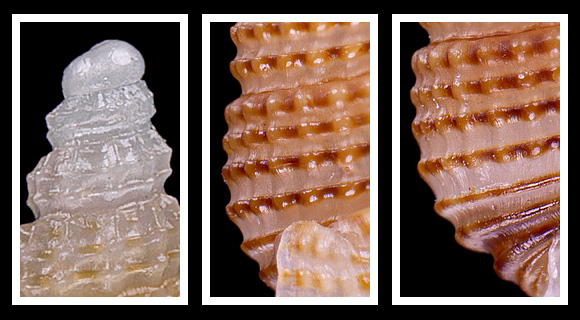
Jeffreys described the species as a variant of reticulatum, and then inserted it in his British Conchology in the fourth volume, p.259: « Var. 1. simplex. Shell rather thinner, and glossy, without any varix; colour yellowish-white, the ridges marked by purplish-brown lines. […] Var. 1. Sark (Barlee); Guernsey and Herm, living under stones and in rock-pools at low-water mark, and dead in 20 f. ». Bucquoy, Dautzenberg & Dollfus notice a variant “tessellata” of lacteum, in their Mollusques marins du Roussillon tome I, Paris 1882-1886, p.217: « In this variant, the decurrent cords are adorned, between each button, of a red spot, giving the shell a tessellate appearance… »
Above and below: 33m deep, Punta de la Mona, La Herradura, Granada, Andalucia, S. Spain. 8,8mm. Original pictures provided by A. Nappo (IT) – (CC BY-NC-SA).

The buttons are axially arranged; young whorls with 3 spirals, adult whorls with 4; on the base, about 4 spiral cords, of the same colour than the spirals on the whorls. The protoconch is white, like in reticulatum, which could explain why this species was considered as a variant of the latter… but the animal is almost pink, which is not the colour of reticulatum.
Finally, there is a dark variant, pictured in gbif.org, which is considered as the “hanleyanum” so succinctly described by Monterosato in a work about marine shells from Morocco.
Finally, there is a dark variant, pictured in gbif.org, which is considered as the “hanleyanum” so succinctly described by Monterosato in a work about marine shells from Morocco.